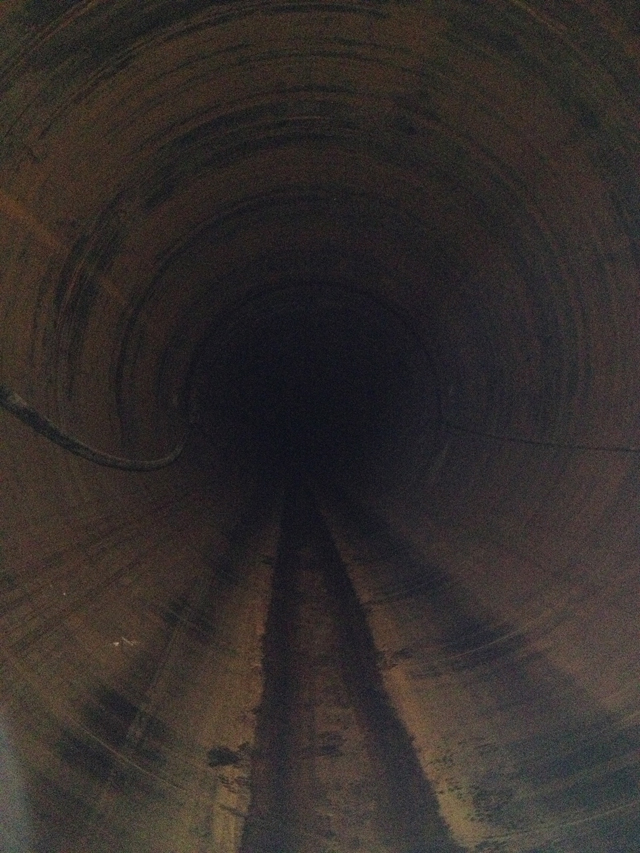By Molly Samuel and Amy Standen
Thursday is the 24th anniversary of the Loma Prieta Earthquake, which, aside from damaging the Bay Bridge and disrupting a World Series game, reminded Bay Area residents that our water system is on shaky ground. (Well, it probably didn’t really remind everyone of that.)
So in 2002, San Francisco got around to passing a ballot measure to seismically retrofit the water system. And in 2010, the San Francisco Public Utilities Commission started construction on a tunnel under the Bay that’s intended to be able to deliver our drinking water, rain or shine or earthquake. The $286 million tunnel is the first that’s actually beneath the Bay; BART’s Transbay Tube sits on the bottom of the Bay.
The tunnel is five miles long and 15 feet in diameter, built with concrete and steel pipeline. (Molly Samuel/KQED)



